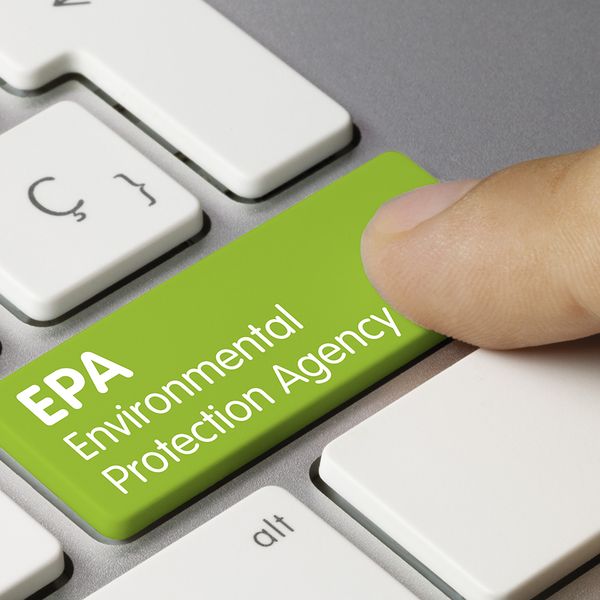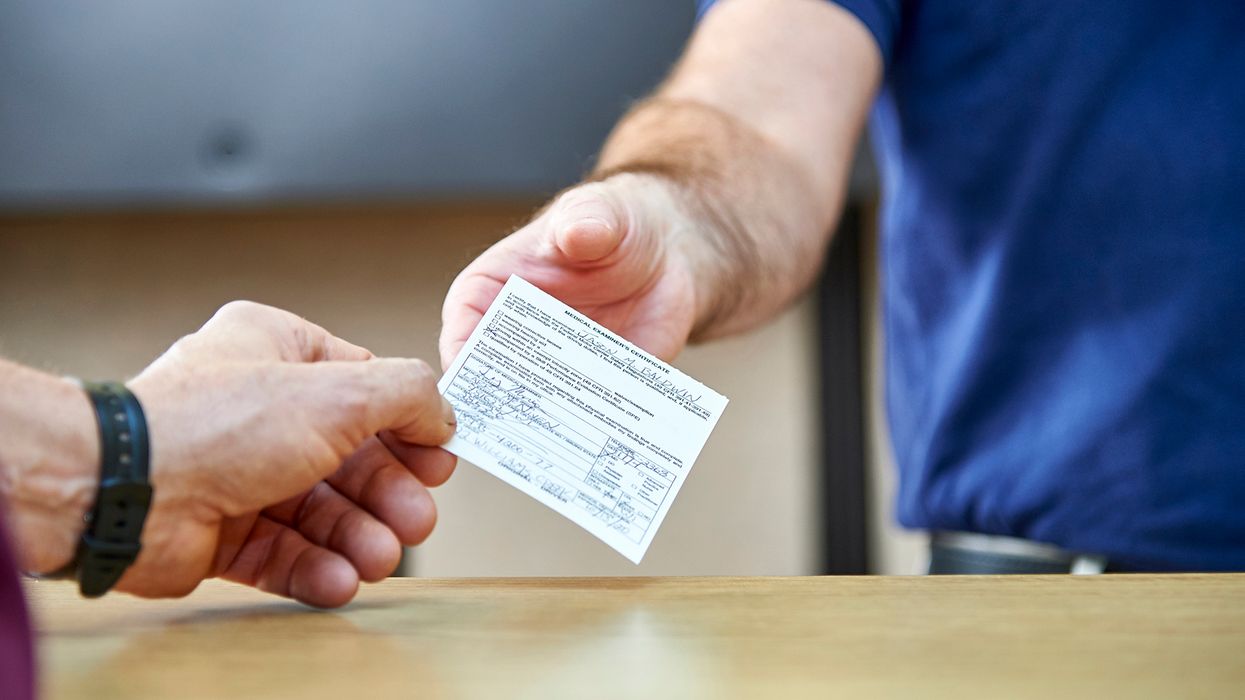EPA: Confidential Business Information Claims under the Toxic Substances Control Act (TSCA)
SUMMARY: The Environmental Protection Agency (EPA) is finalizing new and amended requirements concerning the assertion and treatment of confidential business information (CBI) claims for information reported to or otherwise obtained by EPA under the Toxic Substances Control Act (TSCA). Amendments to TSCA in 2016 included many new provisions concerning the assertion, Agency review, and treatment of confidentiality claims. This document finalizes procedures for submitting such claims in TSCA submissions. It addresses issues such as substantiation requirements, exemptions, electronic reporting enhancements (including expanding electronic reporting requirements), maintenance or withdrawal of confidentiality claims, and provisions in current rules that are inconsistent with amended TSCA. The rule also addresses EPA procedures for reviewing and communicating with TSCA submitters about confidentiality claims.
DATES: This final rule is effective on August 7, 2023, published in the Federal Register June 7, 2023, page 37155.
View final rule.
| §2.306 Special rules governing certain information obtained under the Toxic Substances Control Act. | ||
| Entire section | Revised | View text |
| §702.37 Submission of manufacturer requests for risk evaluations. | ||
| (d) | Revised | View text |
| Part 703 – Confidentiality Claims | ||
| Entire part | Added | View text |
| §704.7 Confidential business information claims. | ||
| Entire section | Revised | View text |
| §707.63 Definitions. | ||
| Entire section | Revised | View text |
| §707.65 Submission to the agency. | ||
| Entire section | Revised | View text |
| §707.67 Contents of notice. | ||
| (a) | Revised | View text |
| §707.75 Confidentiality. | ||
| (d) | Revised | View text |
| §716.55 Confidentiality claims. | ||
| Entire section | Revised | View text |
| §717.17 Inspection and reporting requirements. | ||
| (c) | Revised | View text |
| §717.19 Confidentiality. | ||
| Entire section | Revised | View text |
| §720.80 General provisions. | ||
| Entire section | Revised | View text |
| §720.85 Chemical identity. | ||
| Entire section | Removed | View text |
| §720.90 Data from health and safety studies. | ||
| Entire section | Removed | View text |
| §720.95 Public file. | ||
| Entire section | Removed | View text |
| §720.102 Notice of commencement of manufacture or import. | ||
| (c)(2) | Revised | View text |
| (e), (f) | Added | View text |
| §723.50 Chemical substances manufactured in quantities of 10,000 kilograms or less per year, and chemical substances with low environmental releases and human exposures | ||
| (l) | Revised | View text |
| §723.250 Polymers. | ||
| (f) | Revised | View text |
| (n) | Revised | View text |
| §725.80 General provisions for confidentiality claims. | ||
| Entire section | Revised | View text |
| §725.85 Microorganism identity. | ||
| Entire section | Removed | View text |
| §725.92 Data from health and safety studies of microorganisms. | ||
| Entire section | Removed | View text |
| §725.94 Substantiation requirements. | ||
| Entire section | Removed | View text |
| §725.95 Public file. | ||
| Entire section | Revised | View text |
| §725.190 Notice of commencement of manufacture or import. | ||
| (c) | Revised | View text |
| (e), (f) | Added | View text |
| §790.7 Confidentiality. | ||
| Entire section | Revised | View text |
New Text
§2.306 Special rules governing certain information obtained under the Toxic Substances Control Act.
(a) Definitions. For the purposes of this section:
Act means the Toxic Substances Control Act, 15 U.S.C. 2601 et seq.
Chemical substance has the meaning given it in section 3(2) of the Act, 15 U.S.C. 2602(2).
EPA Legal Office means the EPA Office of General Counsel and any EPA office over which the EPA General Counsel exercises supervisory authority.
Proceeding means any rulemaking, adjudication, or licensing conducted by EPA under the Act or under regulations which implement the Act, except for determinations under this subpart.
(b) Applicability. This section applies as set forth in 40 CFR 703.1.
(c) Basic rules that apply without change. Sections 2.210, 2.211, 2.212, 2.214, and 2.215 of this part apply without change to information to which this section applies. Unless otherwise specified in this section, the provisions in §§2.201 through 2.205 and 2.208 do not apply to information subject to this section. Instead, the provisions of 40 CFR part 703 provide the requirements and procedures relevant to confidentiality determinations for information submitted to EPA under the Act.
(d) Disclosure in special circumstances. (1) EPA intends to make disclosures pursuant to a request under section 14(d)(4), (5), or (6) of the Act for information to which this section applies in accordance with the requirements of the Act and any applicable EPA guidance required by section 14(c)(4)(B) of the Act.
(2) Section 2.209 applies to information to which this section applies, except that:
(i) The notification specified in §2.209(b)(2) is 15 business days.
(ii) The following two additional provisions apply to §2.209(c):
(A) The official purpose for which the information is needed must be in connection with the agency's duties under any law for protection of health or the environment or for specific law enforcement purposes; and
(B) EPA notifies the other agency that the information was acquired under authority of the Act and that any knowing disclosure of the information may subject the officers and employees of the other agency to the penalties in section 14(h) of the Act (15 U.S.C. 2613(h)).
(e) Disclosure of information relevant in a proceeding. (1) Under section 14(d)(7) of the Act (15 U.S.C. 2613(d)(7)), any information to which this section applies may be disclosed by EPA when the information is relevant in a proceeding under the Act, notwithstanding the fact that the information otherwise might be entitled to confidential treatment under this subpart. However, any such disclosure shall be made in a manner that preserves the confidentiality of the information to the extent practicable without impairing the proceeding. Disclosure of information to which this section applies because of its relevance in a proceeding shall be made only in accordance with this paragraph (e).
(2) The provisions of §2.301(g)(2) through (4) apply to disclosures under this paragraph (e).
(f) Disclosure of information to contractors and subcontractors. (1) Under section 14(d)(2) of the Act (15 U.S.C. 2613(d)(2)), any information to which this section applies shall be disclosed by EPA to a contractor or subcontractor of the United States if, in the opinion of the Administrator, the disclosure is necessary for the satisfactory performance of their work in connection with the Act, notwithstanding the fact that the information otherwise might be entitled to confidential treatment under this subpart. Subject to the limitations in this paragraph (f), information to which this section applies may be disclosed:
(i) To a contractor or subcontractor with EPA, if the EPA program office managing the contract first determines in writing that such disclosure is necessary for the satisfactory performance by the contractor or subcontractor of the contract or subcontract; or
(ii) To a contractor or subcontractor with an agency other than EPA, if the EPA program office which provides the information to that agency, contractor, or subcontractor first determines in writing, in consultation with the General Counsel, that such disclosure is necessary for the satisfactory performance by the contractor or subcontractor of the contract or subcontract.
(2) The provisions of §2.301(h)(2)(ii) through (iv) apply to disclosures under paragraph this (f).
(3) At the time any information is furnished to a contractor or subcontractor under this paragraph (f), the EPA office furnishing the information to the contractor or subcontractor shall notify the contractor or subcontractor that the information was acquired under authority of the Act and that any knowing disclosure of the information may subject the contractor or subcontractor and its employees to the penalties in section 14(h) of the Act (15 U.S.C. 2613(h)).
(g) Disclosure of information when necessary to protect health or the environment against an unreasonable risk of injury. (1) Under section 14(d)(3) of the Act (15 U.S.C 2613(d)(3)), any information to which this section applies shall be disclosed by EPA if the Administrator determines that disclosure is necessary to protect health or the environment against an unreasonable risk of injury to health or the environment, without consideration of costs, or other non-risk factors, including an unreasonable risk to a potentially exposed or susceptible subpopulation identified as relevant by the Administrator under the conditions of use. However, any disclosure shall be made in a manner that preserves the confidentiality of the information to the extent not inconsistent with protecting health or the environment against the unreasonable risk of injury. Disclosure of information to which this section applies because of the need to protect health or the environment against an unreasonable risk of injury shall be made only in accordance with this paragraph (g).
(2) If any EPA office determines that there is an unreasonable risk of injury to health or the environment and that to protect health or the environment against the unreasonable risk of injury it is necessary to disclose information to which this section applies that otherwise might be entitled to confidential treatment under this subpart, the EPA office shall notify the EPA Legal Office in writing of the nature of the unreasonable risk of injury, the extent of the disclosure proposed, how the proposed disclosure will serve to protect health or the environment against the unreasonable risk of injury, and the proposed date of disclosure. Such notification shall be made as soon as practicable after discovery of the unreasonable risk of injury. If the EPA office determines that the risk of injury is so imminent that it is impracticable to furnish written notification to the EPA Legal Office, the EPA office shall notify the EPA Legal Office orally.
(3) Upon receipt of notification under paragraph (g)(2) of this section, the EPA Legal Office shall make a determination in writing whether disclosure of information to which this section applies that otherwise might be entitled to confidential treatment is necessary to protect health or the environment against an unreasonable risk of injury. The EPA Legal Office shall also determine the extent of disclosure necessary to protect against the unreasonable risk of injury as well as when the disclosure must be made to protect against the unreasonable risk of injury.
(4) If the EPA Legal Office determines that disclosure of information to which this section applies that otherwise might be entitled to confidential treatment is necessary to protect health or the environment against an unreasonable risk of injury, the EPA Legal Office shall furnish notice to each affected business of the contemplated disclosure and of the Legal Office's determination. Such notice shall be made in writing, via either electronic notice as described in 40 CFR 703.5(h) or by certified mail, return receipt requested, at least 15 business days before the disclosure is to be made. The notice shall state the date upon which disclosure will be made. However, if the EPA Legal Office determines that disclosure of the information is necessary to protect against an imminent and substantial harm to health or the environment, no prior notification is necessary.
§702.37 Submission of manufacturer requests for risk evaluations.
* * * *
(d) Confidential business information. Claims of confidentiality must be made in accordance with the procedures described in 40 CFR part 703.
§704.7 Confidential business information claims.
Claims of confidentiality must be made in accordance with the procedures described in 40 CFR part 703.
§707.63 Definitions.
The definitions set forth in the Toxic Substances Control Act, section 3, apply for this part. In addition, the following abbreviations and definitions are provided for purposes of this rule:
CDX or Central Data Exchange means EPA's centralized electronic document receiving system, or its successor system.
EPA
means the Environmental Protection Agency.
Exporter
means the person who, as the principal party in interest in the export transaction, has the power and responsibility for determining and controlling the sending of the chemical substance or mixture to a destination out of the customs territory of the United States.
Regulated chemical
means any chemical substance or mixture for which export notice is required under §707.60.
TSCA
means the Toxic Substances Control Act.
§707.65 Submission to the agency.
(a) For each action under TSCA triggering export notification, exporters must notify EPA of their export or intended export of each subject chemical substance or mixture for which export notice is required under §707.60 in accordance with the following:
(1)(i) The export notice must be for the first export or intended export by an exporter to a particular country in a calendar year when the chemical substance or mixture is the subject of an order issued, an action that is pending, or relief that has been granted under TSCA section 5(f), a rule that has been proposed or promulgated under TSCA section 6, or an action that is pending or relief that has been granted under TSCA section 7.
(ii) The export notice must only be for the first export or intended export by an exporter to a particular country when the chemical substance or mixture is the subject of an order issued, an action that is pending, or relief that has been granted under TSCA section 5(e), a rule that has been proposed or promulgated under TSCA section 5(a)(2), or when the submission of data is required under TSCA section 4 or 5(b). Under this paragraph, notice of export to a particular country is not required if an exporter previously submitted to EPA a notice of export to that country prior to January 16, 2007.
(2) The export notice must be submitted to EPA within seven days of forming the intent to export or on the date of export, whichever is earlier. A notice of intent to export must be based on a definite contractual obligation, or an equivalent intra-company agreement, to export the regulated chemical.
(b) If the EPA action that prompts the notice is a proposed rule, the requirement to submit export notices to EPA shall begin thirty days after publication of the action in the Federal Register .
(c) Export notices must be submitted via CDX, using the TSCA section 12(b) Export Notification Application or its successor.
§707.67 Contents of notice.
(a) The name of the regulated chemical as it appears in the TSCA section 4, 5, 6, and/or 7 action. For substances on the confidential portion of the TSCA Inventory, the substance must be identified by generic name and accession number, or by any other non-confidential identifier under which it is listed on the TSCA section 12(b) reporting list maintained by EPA and available in the TSCA section 12(b) Export Notification Application described in §707.65(c). If a category is regulated, the name of the individual regulated chemical within that category, as well as the category, must be given. The name must be that which appears in the TSCA Inventory if the chemical appears there.
§707.75 Confidentiality.
* * * *
(d) Claims of confidentiality must be made in accordance with the procedures described in 40 CFR part 703.
§716.55 Confidentiality claims.
Claims of confidentiality must be made in accordance with the procedures described in 40 CFR part 703.
§717.17 Inspection and reporting requirements.
* * * *
(c) How to Report. When required to report, firms must submit copies of records via CDX https://cdx.epa.gov/ using the EPA provided electronic reporting application.
§717.19 Confidentiality.
Claims of confidentiality must be made in accordance with the procedures described in 40 CFR part 703.
§720.80 General provisions.
Claims of confidentiality must be made in accordance with the procedures described in 40 CFR part 703.
§720.95 Public file.
All information submitted with a notice, including any health and safety study and other supporting documentation, will become part of the public file for that notice, unless such materials are claimed confidential in accordance with procedures in 40 CFR 703.5. In addition, EPA may add materials to the public file, subject to subpart E of this part. Publicly available materials are available at the docket addresses in §700.17(b)(1) and (2) of this subchapter and on EPA's website.
§720.102 Notice of commencement of manufacture or import.
* * * *
(c)(2) If the submitter claims any information on the form as confidential, the claim must be asserted and substantiated in accordance with the requirements described in 40 CFR part 703 and must be submitted via EPA Form 7710–56. If the submitter wants the chemical identity to be listed on the confidential portion of the TSCA Inventory, the chemical identity must be claimed as confidential and the submitter must also follow the certification, substantiation, and generic name requirements described 40 CFR part 703 and paragraphs (e) and (f) of this section. Otherwise, EPA will list the specific chemical identity on the public TSCA Inventory. Submitters who did not claim the chemical identity, submitter identity, or other information to be confidential in the PMN cannot claim this information as confidential in the notice of commencement.
§723.50 Chemical substances manufactured in quantities of 10,000 kilograms or less per year, and chemical substances with low environmental releases and human exposures
* * * *
(l) Confidentiality. Claims of confidentiality must be made in accordance with the procedures described in 40 CFR part 703.
§723.250 Polymers.
* * * *
(f) Exemption report for polymers manufactured under the terms of this section. For substances exempt under paragraphs (e)(1) through (3) of this section a report of manufacture or import must be submitted by January 31 of the year subsequent to initial manufacture. The report and accompanying claims must be submitted via CDX ( https://cdx.epa.gov/ ), using the TSCA Section 5 Notices and Supports—ePMN application. See §720.40(a)(2)(ii) of this subchapter for information on how to access e-PMN software. The notice must include:
* * * * *
(n) Confidentiality. Claims of confidentiality must be made in accordance with the procedures described in 40 CFR part 703.
§725.80 General provisions for confidentiality claims.
Claims of confidentiality must be made in accordance with the procedures described in 40 CFR part 703, except as modified in this paragraph. In general, references to “chemical” or “chemical identity” in part 703 are equivalent to “microorganism” or “microorganism identity” for the purposes of this part.
(a) In place of §703.5(b)(3)(v) of this subchapter, the following question must be answered: Has EPA, another Federal agency, or court made any confidentiality determination regarding information associated with this microorganism? If yes, please provide the circumstances associated with the prior determination, whether the information was found to be entitled to confidential treatment, the entity that made the decision, and the date of the determination.
(b) In place of §703.5(b)(4) of this subchapter, the following questions apply:
(1) Has the identity of the microorganism been kept confidential to the extent that competitors do not know it is being manufactured or imported into US commerce? If not, explain why the microorganism identity should still be afforded confidential status (e.g., the microorganism is publicly known only as being distributed in commerce for research and development purposes, but no other information about the current commercial distribution of the microorganism in the United States is publicly available).
(2) Does the microorganism leave the site of production or testing in a form which is accessible to the public or to competitors? If yes, please explain what measures have been taken to guard against the discovery of its identity. Further, what is the cost to a competitor, in time and money, to develop appropriate use conditions? What factors facilitate or impede product analysis?
§725.95 Public file.
All information submitted, including any health and safety study of a microorganism and other supporting documentation, will become part of the public file for that submission, unless such materials are claimed as confidential in accordance with this section. In addition, EPA may add materials to the public file, subject to subpart C of this part. Publicly available materials are available at the docket addresses in §700.17(b)(1) and (2) of this subchapter and on EPA's website.
§725.190 Notice of commencement of manufacture or import.
* * * *
(c) Information to be reported. The NOC must contain the following information: Specific microorganism identity, MCAN number, and the date when manufacture or import commences. If the person claims any information on the form as confidential, the claim must be asserted and substantiated in accordance with the requirements described in part 703 of this subchapter and §725.80, as indicated in EPA Form 7710–56. If the submitter wants the microorganism identity to be listed on the confidential portion of the TSCA Inventory, the microorganism identity must be claimed as confidential and also follow the certification, substantiation, and generic name requirements described in part 703 of this subchapter and paragraphs (e) and (f) of this section.
§790.7 Confidentiality.
Claims of confidentiality must be made in accordance with the procedures described in 40 CFR part 703.

















































